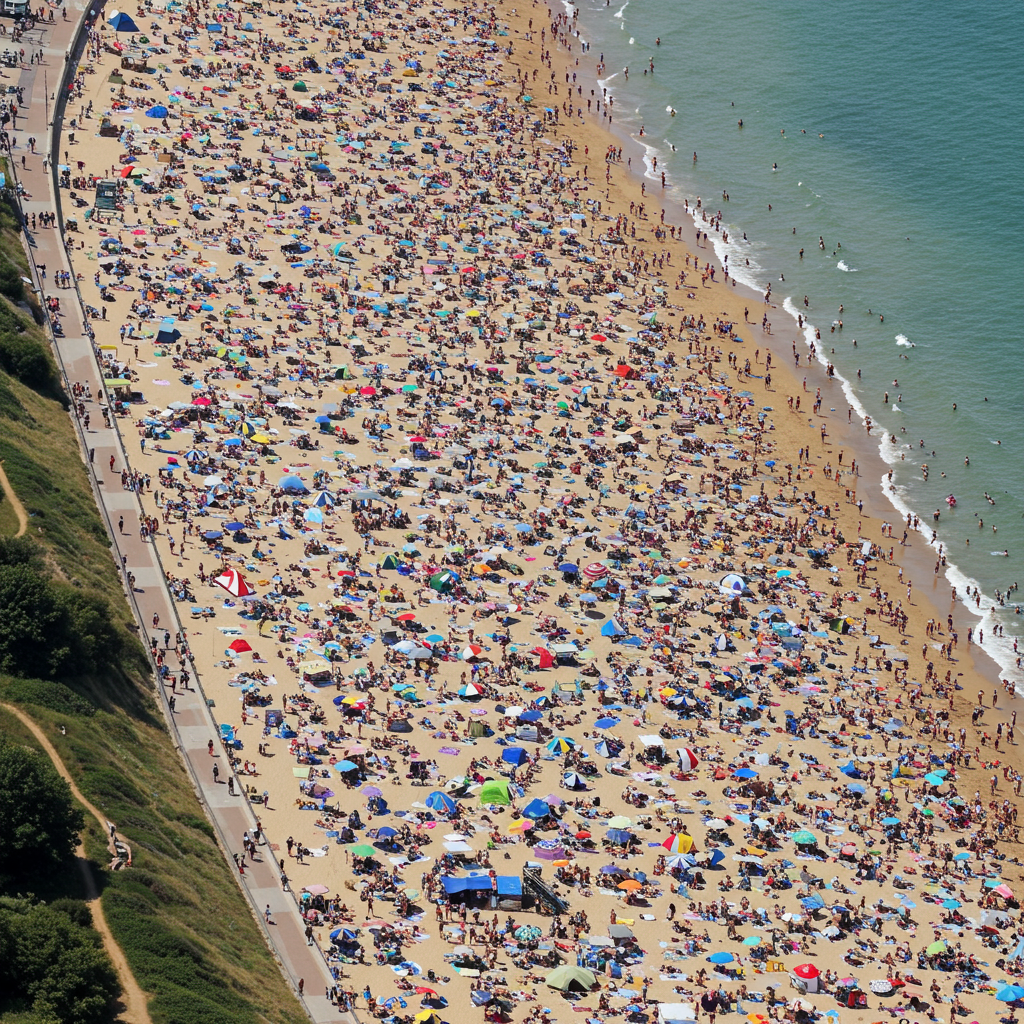Summer 2020 brought unique challenges as the world grappled with the Covid-19 pandemic. While many were confined by stringent lockdowns, a soaring heatwave in the UK during June saw a massive, chaotic scene unfold on the south coast, described by one newspaper as “Armageddon.”
The UK in Lockdown
For months leading up to this event, life in the United Kingdom had been drastically altered by lockdown measures implemented in March 2020. Pubs, theatres, and most high street shops were shuttered. Sporting events were cancelled, including major fixtures like Premier League football. Despite these strict controls, the virus had taken a heavy toll, with estimates suggesting around 50,000 deaths in the UK by early June.
However, mid-June saw tentative steps towards reopening society. Many retail shops were permitted to trade again, and the government announced plans to ease the mandatory 2-meter social distancing rule to 1 meter. As the mercury climbed, a sense of cautious optimism, or perhaps desperation for respite, began to emerge.
‘Armageddon’ on the Sand
This confluence of relaxed restrictions and extreme weather culminated on June 25, 2020. As temperatures reached a sweltering 33.3C (92F) – the highest recorded in the UK that year so far – Britons flocked en masse to coastal areas. The seaside towns of Bournemouth, Christchurch, and Poole in Dorset, usually popular summer destinations, were utterly overwhelmed.
The scale of the influx prompted the Bournemouth, Christchurch and Poole Council to declare a major incident. Reports from the time painted a picture of chaos: streets were gridlocked, waste bins overflowed, scuffles broke out, and some people were even forced to camp on the beach overnight because they couldn’t get home. The Daily Telegraph newspaper notably described the scene as “Armageddon.”
Witnessing the Chaos: A Photographer’s Perspective
Amidst this pandemonium was Agent-France Press (AFP) photographer Glyn Kirk. With his usual assignments like cricket matches cancelled due to the pandemic, Kirk was sent to document the unprecedented crowds.
Looking back, Kirk recalled his shock at the sheer numbers. “You can see it looks really busy,” he noted. While some individuals attempted to maintain distance, he questioned, “How can all these people keep away from each other?” He compared the density of the crowd to the Cheltenham Gold Cup horse racing festival he’d covered in March 2020, an event attended by nearly 250,000 people over four days and later suggested by a former UK chief scientific advisor to have potentially been a super-spreader event.
Covering the scene presented significant logistical challenges for Kirk. The sheer volume of visitors meant he had to park his car miles away and trek to the beach with his heavy gear. Sending photos back to his agency was equally difficult; the vast number of people using their phones on the beach had overloaded the local network, forcing him to walk considerable distances just to find a usable signal. Kirk also addressed criticism that his photos made the crowds look worse, explaining he used a 70mm lens, which offers a more natural perspective compared to the long lenses used in sports photography that can compress distance.
The Unseen Problems: Sanitation Crisis and Closed Toilets
Beyond the visible overcrowding, the scale of the problem became starkly clear in the aftermath. Over just two days, local waste services cleared a staggering 41 tonnes of rubbish from the beaches – including human effluent.
A major contributing factor to this sanitation crisis was the closure of public toilets due to Covid restrictions. This created a significant public health issue, leaving people with nowhere to go. Kirk himself had experienced this problem firsthand during his assignments in locked-down London, where facilities like Tube station toilets were unavailable.
A Global Challenge: Not Just the UK
The challenges seen on Bournemouth beach were not unique to the UK, underscoring the global difficulty in managing public behaviour during the pandemic, especially when combined with environmental factors like heatwaves. Across the world, authorities faced similar dilemmas.
In Sydney, Australia, for instance, just weeks later in August 2020, thousands also flocked to popular beaches like Bondi and Coogee during a warm spell, despite rising local Covid-19 cases linked to a CBD cluster. While officials hadn’t closed these beaches, health authorities urged social distancing, and lifeguards used loudspeakers to remind people. Photographic evidence, however, showed beaches packed with individuals often close together, sparking public debate and concern that such behaviour could lead to new outbreaks and potential re-closure of public spaces, similar to what had happened in March.
A Strange New Normal
For photographers like Kirk, the packed beach scene stood in stark contrast to the eerie quietness he had witnessed earlier in the lockdown. Living in Brighton, another major seaside city, he had grown accustomed to seeing beaches unusually devoid of people. Even the seagulls, usually adept at pilfering food, seemed confused by the lack of potential targets.
The Bournemouth incident of June 2020 serves as a powerful visual representation of the complex tensions present during the early phases of easing pandemic restrictions – the public’s profound need for respite and normalcy clashing dramatically with the ongoing imperatives of social distancing and public health. It was a snapshot of the chaotic reality born from a global crisis meeting a simple summer heatwave.



